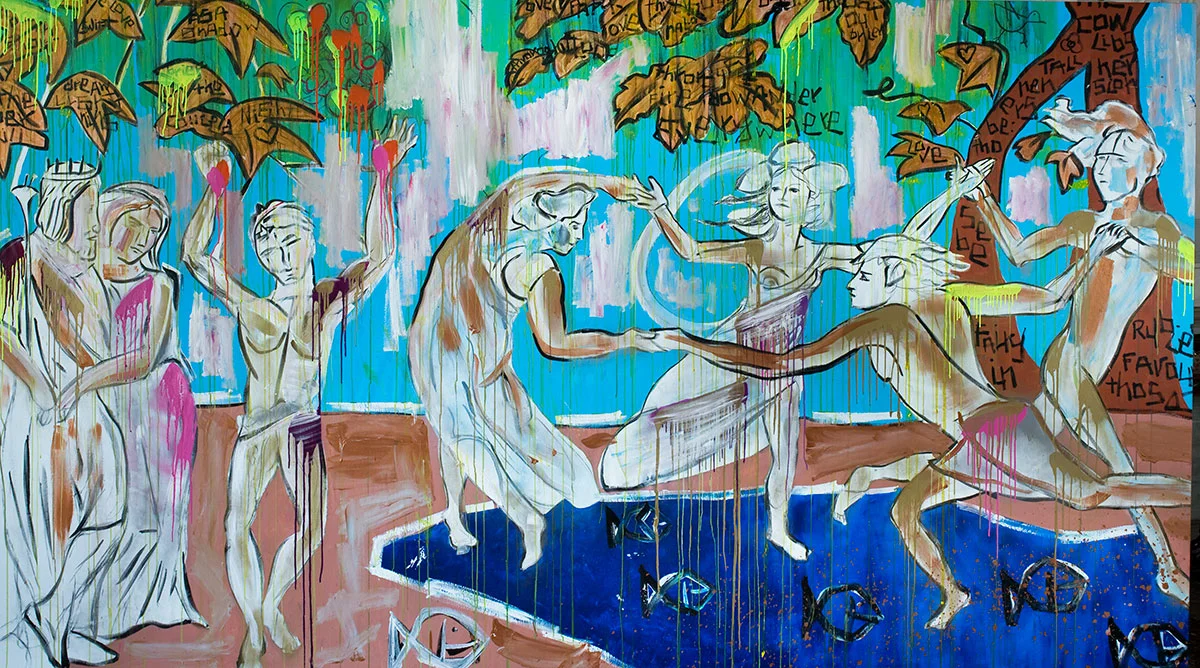
Domingo Zapata “Titania & Oberon,” (2013). Acrylic on canvas. 75 x 134 inches. Courtesy of Domingo Zapata, Venice.

Domingo Zapata “Midsummer Ballerinas II,” (2013). Acrylic on canvas. 52 inches x 64 inches. Courtesy of Domingo Zapata, Venice.
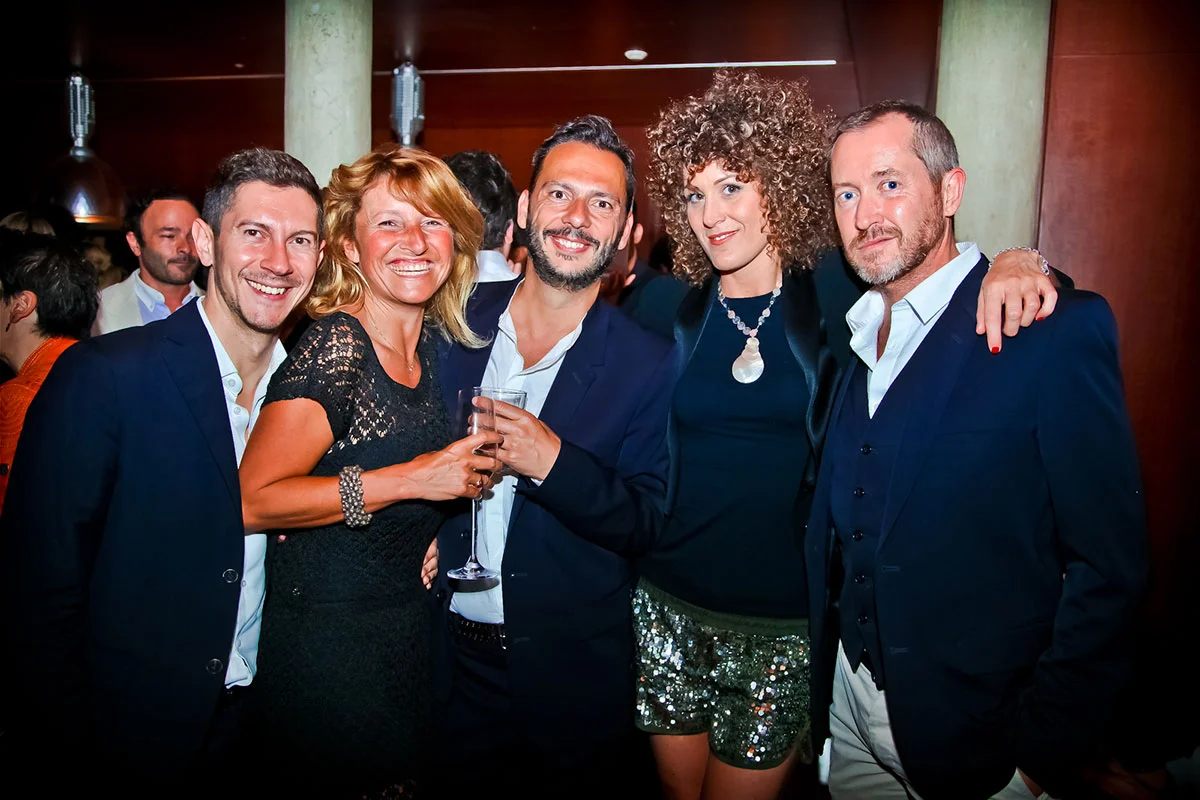
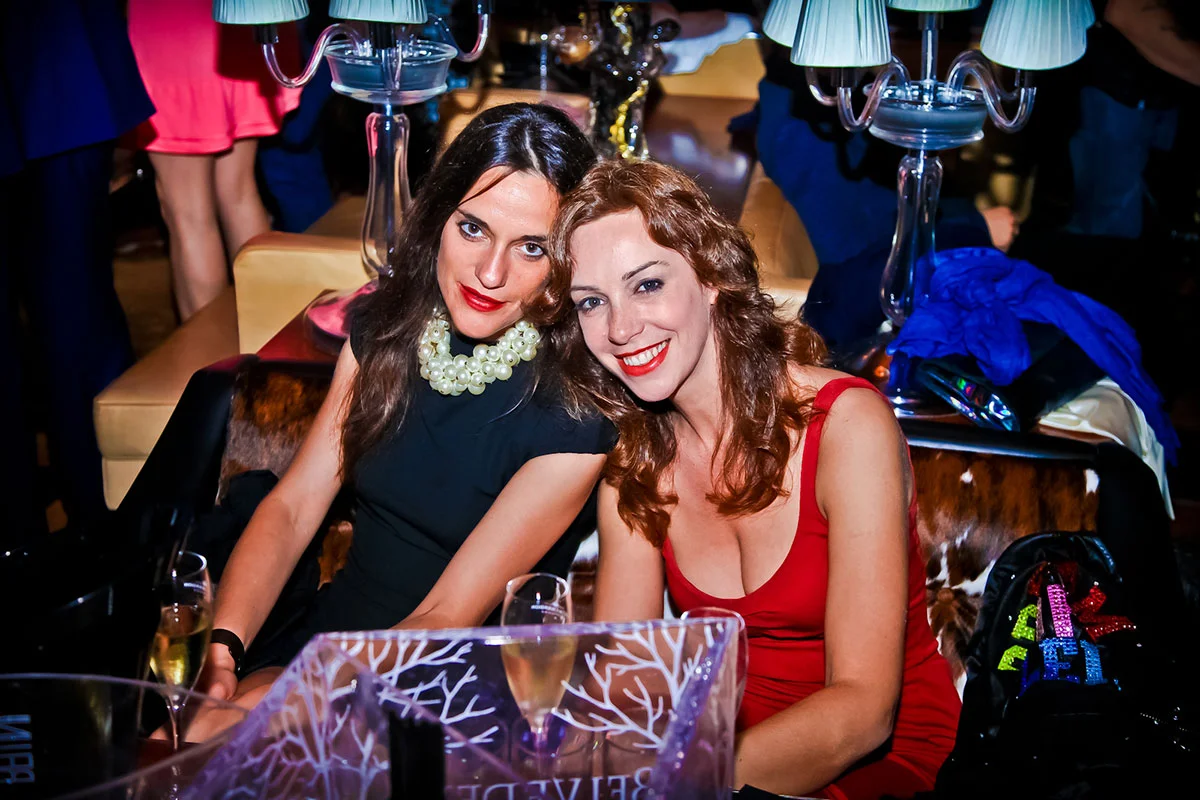
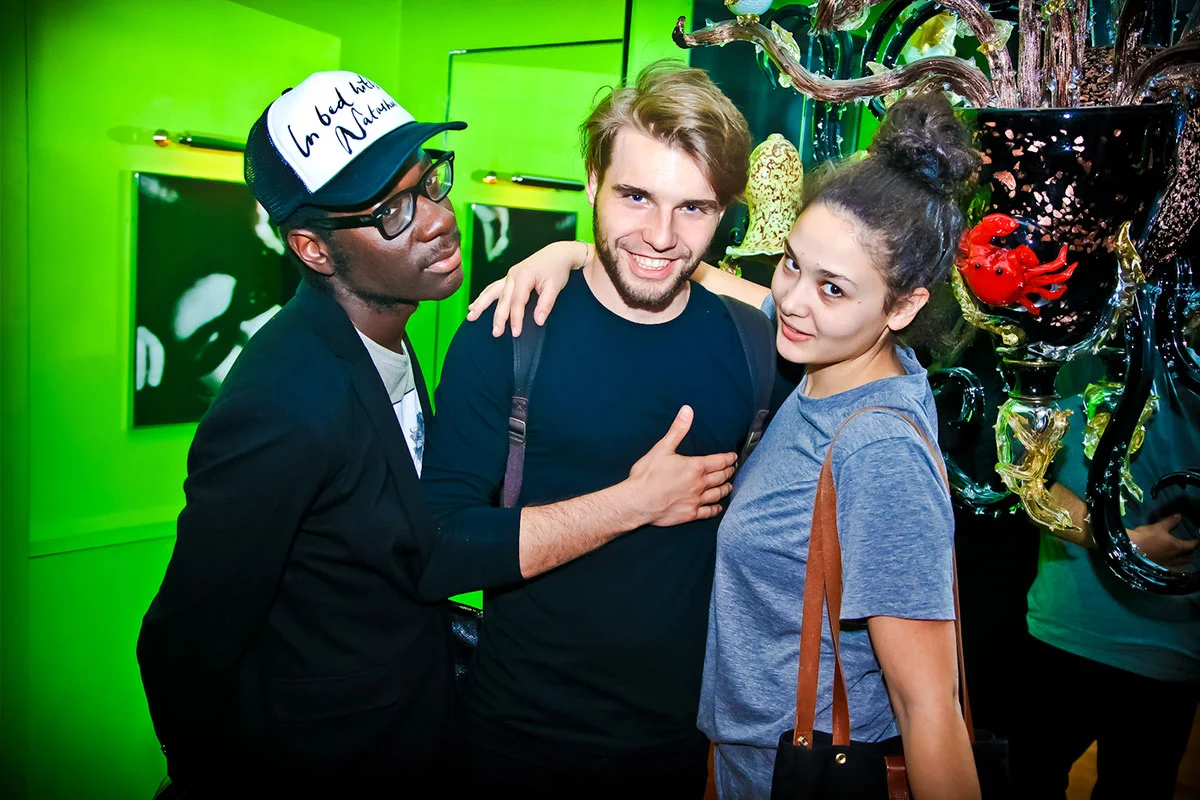
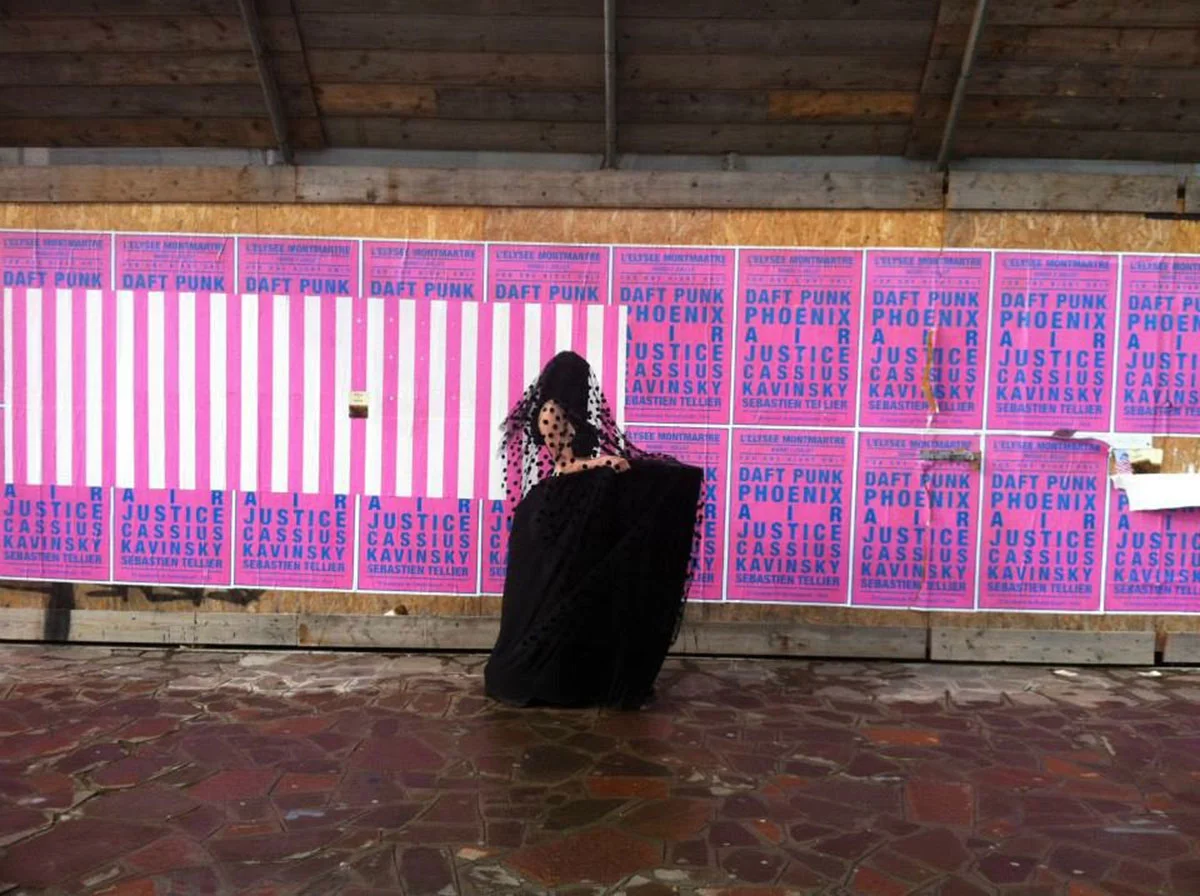
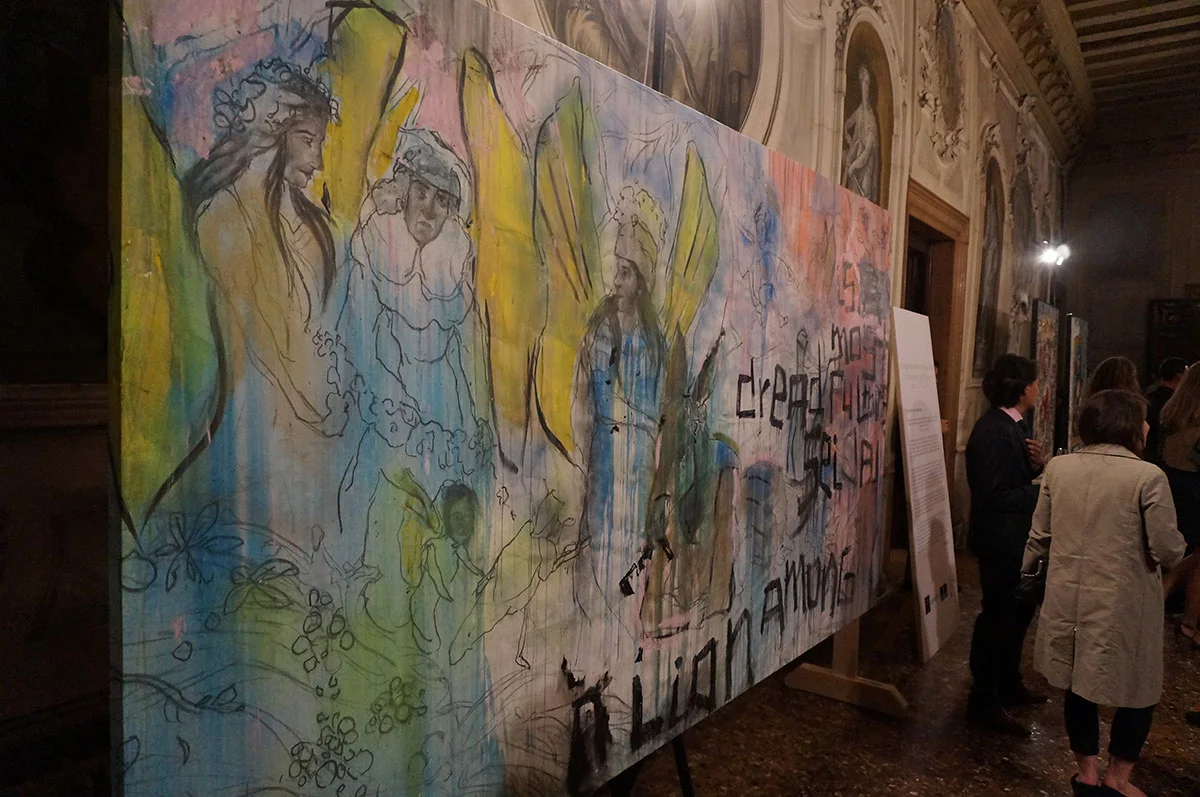
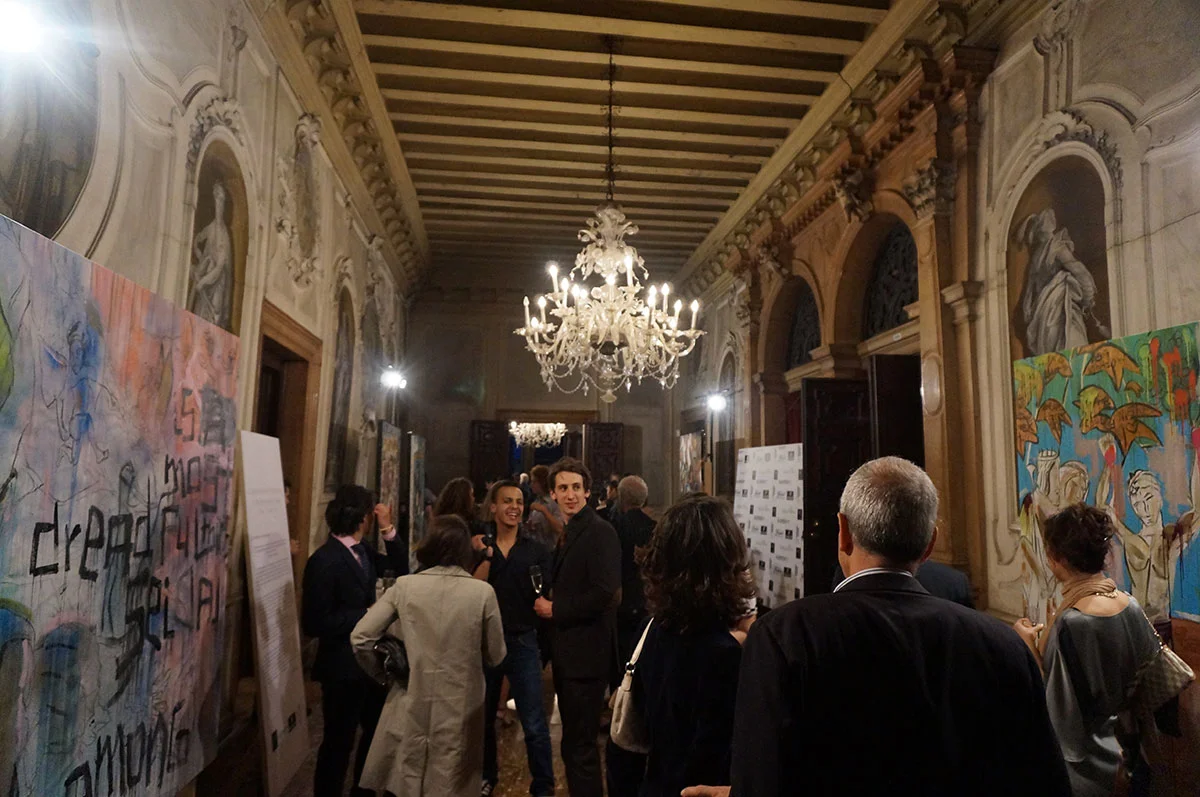

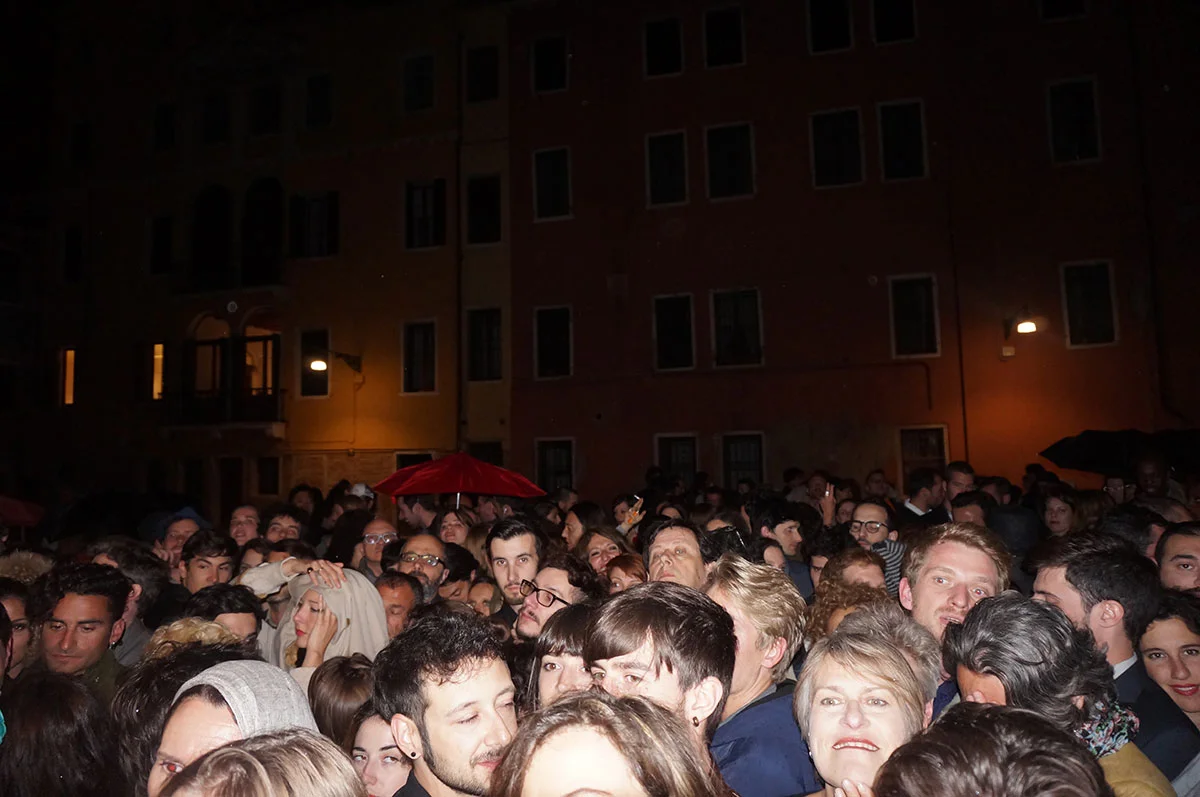
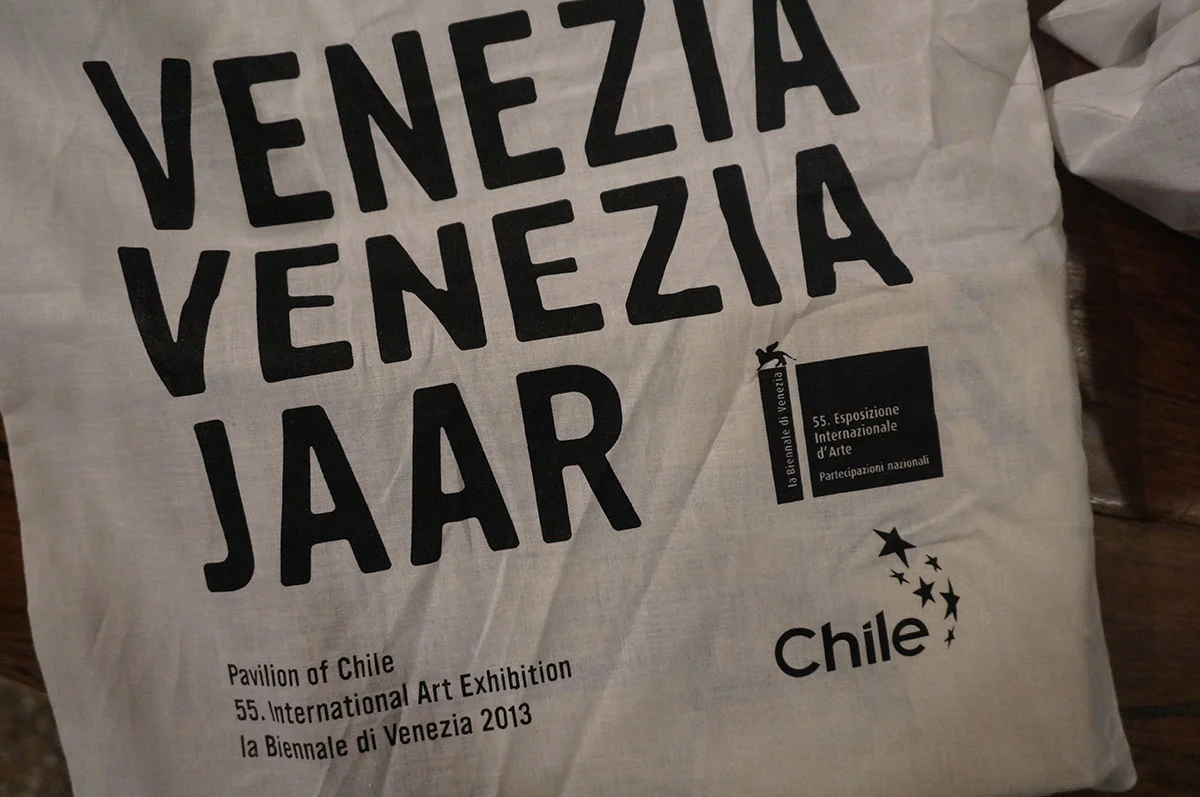
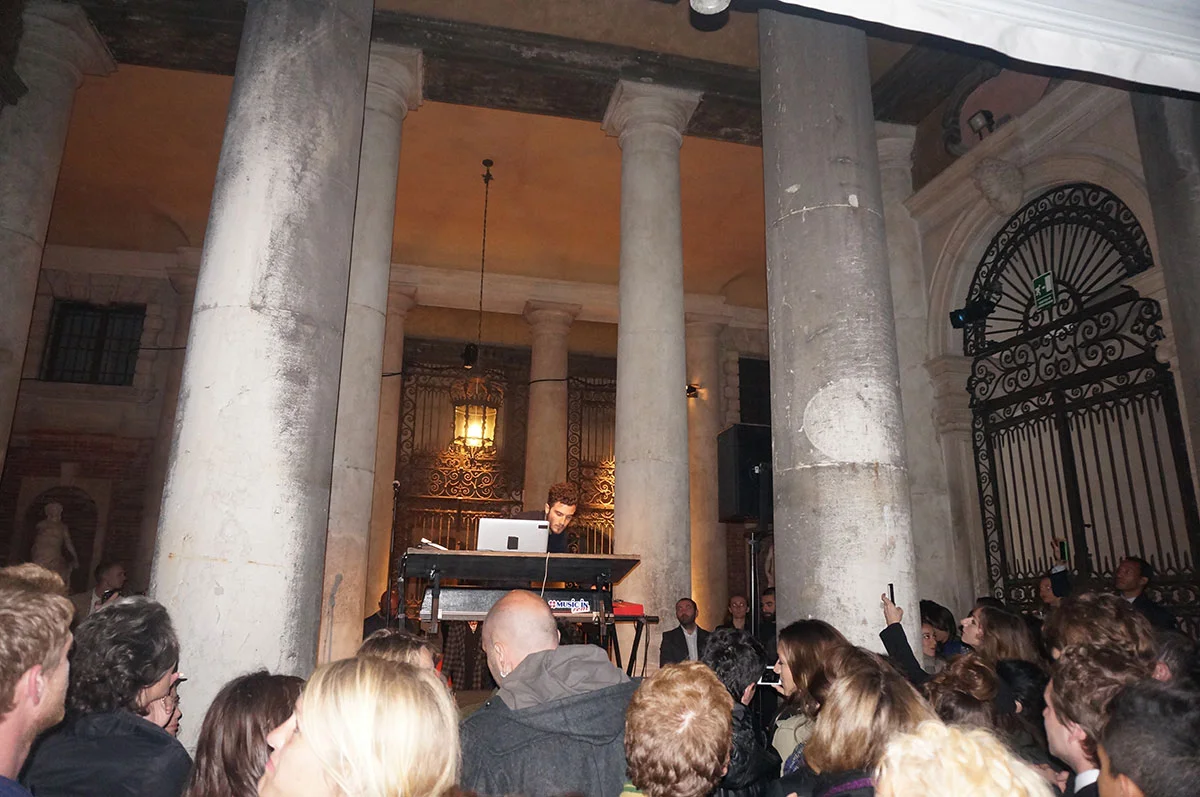
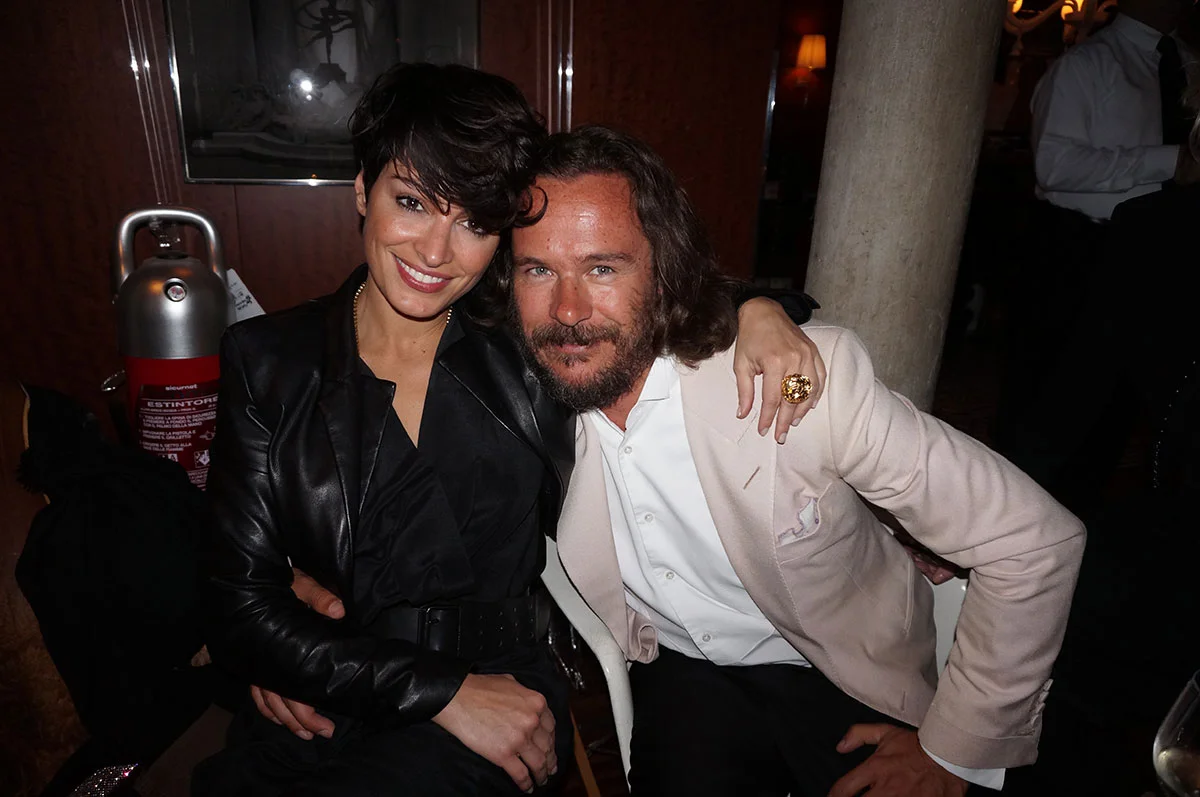

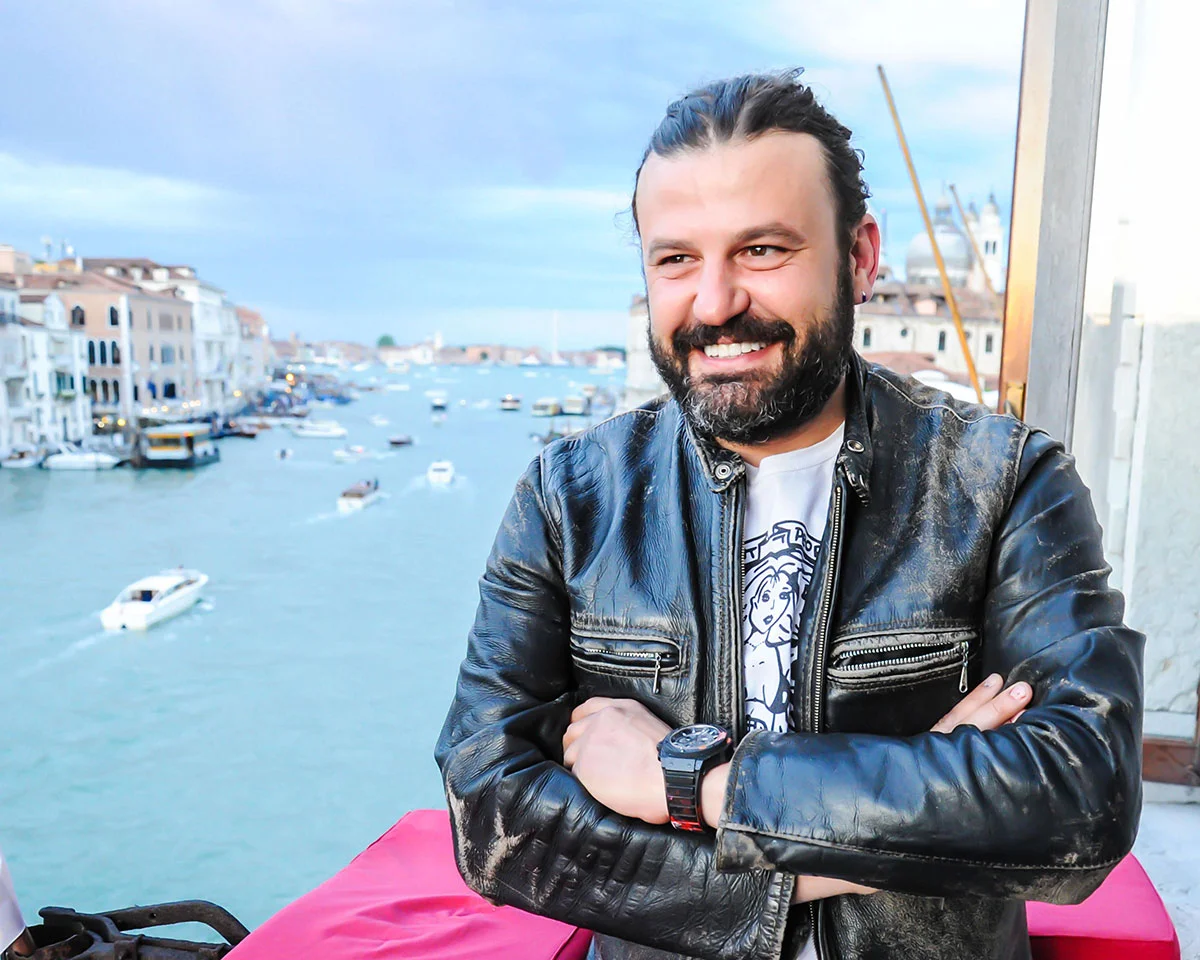


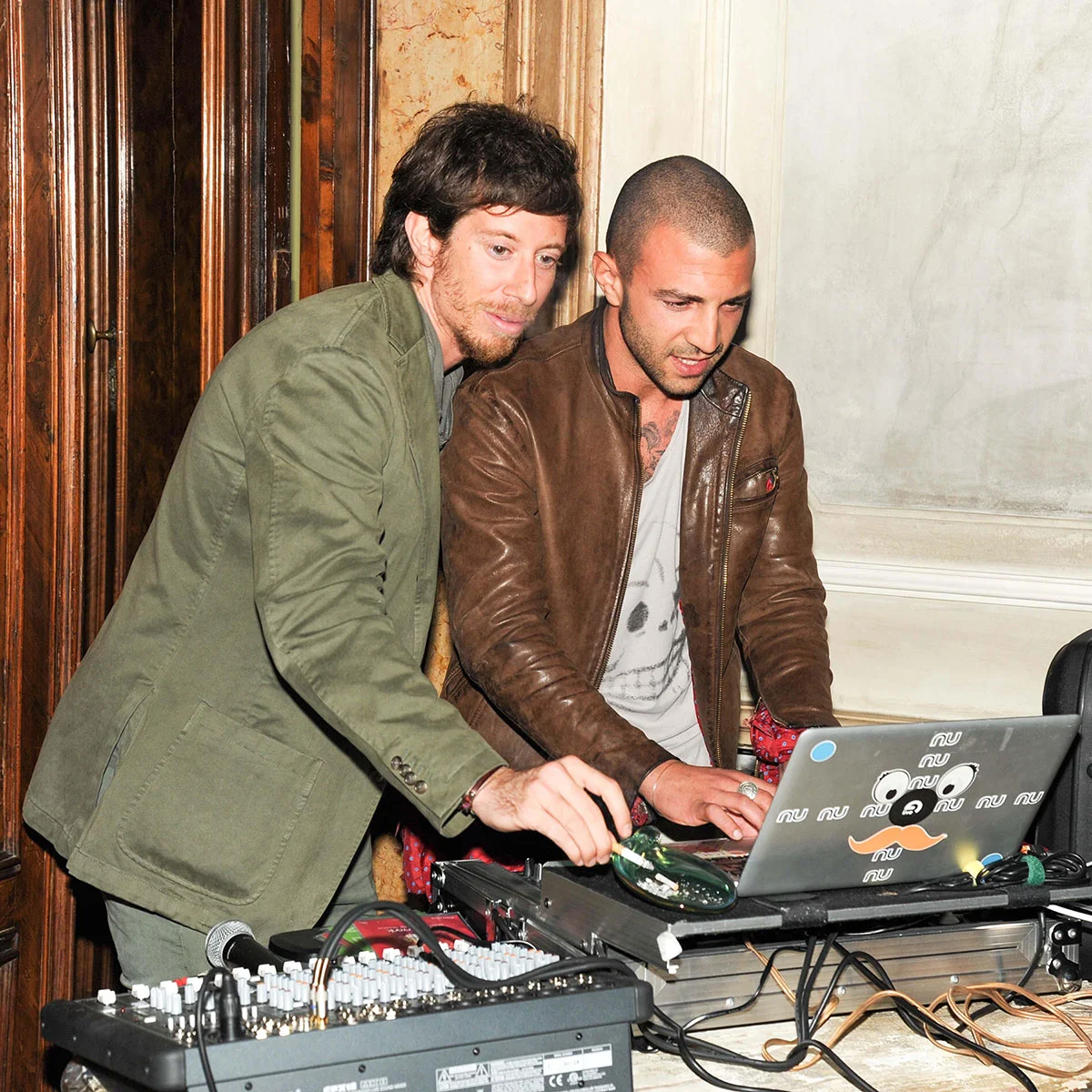
[](#)[](#)
Column: Culture
From Caves to Canals: Spanish Artist Domingo Zapata takes us to Paradise via the Venice Biennale
_It commences like this: if we were pagans, we’d feel less._ Instead, Spanish artist Domingo Zapata, here on the archaic and glittery banks of Venice’s Grand Canal, day two of the Biennale, after ordering a seafood “feast for champions” and flittering skyward alms to the ever-present sprinkles of God in his life, tells me about the importance of the transcendent siesta. “No matter who I’m with or where I am, I say ‘excuse me I have to sleep.’ I put my pajamas on and I sleep for two hours everyday.” Some would say siestas are god-like. Some would agree with Zapata. Where pain and perseverance equates to wild euphoria, siestas are not pain. They’re weakness leaving the body.
Zapata is enjoying his debut show in the arching halls of the stunning Palazzo da Mula, sidesaddle to the Guggenheim. It’s his signature oil and acrylic: dancers, floral splashes, and surreal religion-meets-celebrity at the mucho famosa art festival following a two-month residency here creating the work. In the show, he’s also presenting two new expressions: massive, color-lush mosaics and bullfighter regalia, which he’s decked out with paint splashes that lend the honorable garb a collector’s fashion edge. Of the bull-play, he shares, “So I think it’s quite an incredible, very interesting thing. I mean, look! Goya painted bullfighters, Picasso painted them, Hemingway wrote about bullfighters. I mean, the guy has dinner with you and tomorrow he goes and he might never come back. They can be very wealthy and very famous, and very rich…but they still go. Why do they do it? It’s crazy.”
Zapata continues, as we discuss the relevance of the painter in 2013: “The first art we know is the hands of the caveman dipped in blood and put in the cave. What that stated was: ‘We exist.’ That’s the first artistic expression, the cave man. Now, he used blood to stain. And so, I think the medium of painting is never going to go away.” And he’s right. He continues to stain: Zapata is working on a mural for New York’s High Line and a project at The Bowery Mission for the homeless.
_Popping from palazzo to palazzo, one finds oneself in palazzo hotel rooms, enjoying comments like these from hip pals with advances on long-anticipated records: “This is like the most burnt Boards of Canada album I’ve ever heard. It’s like the tires are out of air.” / “I like it though. It’s weeded out.”_ Prior to our delightful exchange, we docked at Palazzina G, the power play boutique stay for the Biennale and a seasonal fun run that Venice has known for hundreds of years. Then: espresso with the Renzo Rosso assort, where we bump into Salma Hayek and François Pinault, who’s due to meet with Rosso following our coffee, and discuss sums that are gross multiplications of our own. The ghost of J Dilla was there. And in burst a Tom Ford model wielding a revolver. Then a bargaining process wherein we swapped some Woody Harrelson OG for safety. In other words: snackin’.
_Oh, Venice. Where, amidst the Venetians, garishly chic artocrats, puffed-up tourists in backpacks and cargo shorts, and the high faultin’-who-wants-a-bruisin’ commodity swap of a market image and valuation by the few (never puffed though garishly chic) can one enjoy such aesthetic, orgiastic refine?_ Regards hip pals: “There it is!” Sculptor/installation artist Diana Al-Hadid exclaims from the interior of a boatman’s moat den. See, the gallery supposedly supporting her exhibition in Venezia flaked. The lot of us are en route to a dance party and after much elaboration on the shady tactics of said gallery, she exclaims, like I said, “There it is!” We peer across the water where a giant shipping container, parked in front of a palazzo, never to exhibit, is pounded by the rain. It’s not the stalactite spires or organs gone sculptural that Hadid’s work typically exudes, but it’s almost beautiful. Almost an installation. And we’re so drunk anyway. Following our night out, we stuff into an elevator the size of a Camel pack, nut to butt, and unfold into a grand cavern of an apartment. Oh, Italians. We played no music and cut right to the chase.
_Disco naps, Robitussin, stained glass. I’m not leaving until I have gout._ Time moves forward and we find ourselves amid the masses. This Chilean arts patron with silvery hair and an award-winning mustache muscles his way into the front of the throng. I look down and notice his crowd-splitting torso belongs to a pair of horse legs. He’s a conceptualist’s centaur, and he’s here to witness the conservatory’s peeling open. The crowd he parts? They’re awaiting Nico Jaar, who’s set to play inside the conservatory following a reception for his father, installation artist Alfredo Jaar, who is this year’s representative of the Chilean Pavillion. DNA, eh? Nico tears it apart, natch, despite a Cinderella-like interruption at midnight from the conservatory’s keepers, who insist the bass is going to wiggle free the 400-year-old busts on the surrounding walls. Jaar prevails, and the sea of people, a sliver of the mob outside who’d attempted entry (photos herein) goes bananas. But he’s not done. He declares, “Let’s party” upon finishing and we set about the city to find another venue, the clack of his mixer-housing roller case atop the cobbled bridges announcing our intent atop. We barge into a sweaty disco where, after having just been serenaded in a gorgeously vaulted stone structure, the ceilings feel six feet tall, and it seems no one is hip to the fact that scores of the world’s most prestigious art parties are banging on in close proximity. Fortunately—for Jaar very much likes this den of inequity and we’re nearly subjected to his whims—the bass is garbage, and we scuttle out in the alley, now firmly bent on Palazzina G. What else is there to say? We show up and the proprietary arm nearly eats his quadruple plumed Zegna tie on hearing that Nico wants to play, and within about two and a half minutes out pops the Dom and in pops Nico, who delivers a stack of tunes that still has our bowels gleefully irregular.
And that’s the thing. Despite the arcane atmosphere, the midlevel gruel of thick noodles with rustic sauce pounded down between openings, the way the clouds lay like hamburger patties atop hard-fought, hard-won civilization, Venice is still Venice. (Having our own Venice, of course, there is always a pause in conversation regarding what we Angelenos might be referencing. Do you mean the Venice that sees doughy tourists atop river floats, the planet’s grandest art exchange, and the finest testament to culture’s brutal sustenance we can really consider? Indeed. But similarly, is there not a politic of the new at play that sees the Venetian way, on a windy canal that may or may not lead back to your hotel, your hard sell, the fragile egg shell, or to a Woody Harrelson OG dispensary via roller blades, beneath Malibu-bound helicopters, that forever retains its core but fans into the wild beyond? Sure. Which is why this place is such a delight.) At the Nico Jaar show, I meet a group of Kosovars, who, like the Vatican, were seeing their country’s inaugural play at the Biennale, which is flipping old. One artist, Shelbatra Jashari, explains to me she’ll be doing an illegal performance in the coming 48 hours. “Bar Burka” happened perhaps somewhere in the territory between the Arsenale and the Giardini. She’d buddied up with new Kosovo magazine, _Kosovo 2.0_, and in so doing, became part of this bit of text pulled from their homepage. 1.) Enjoy, and 2.) Date some Balkan men, already. Hugs and kisses.
